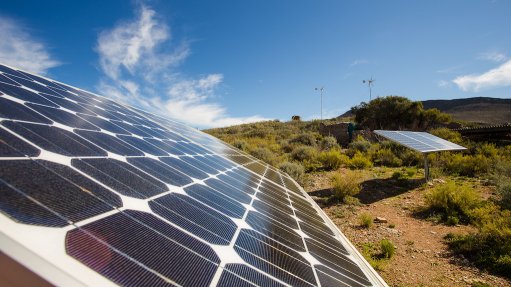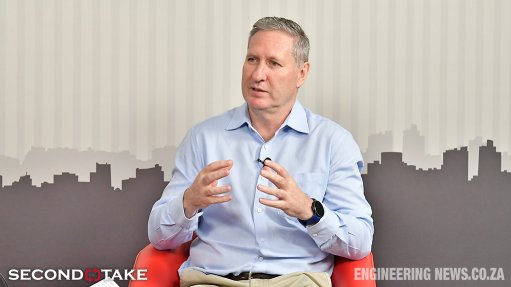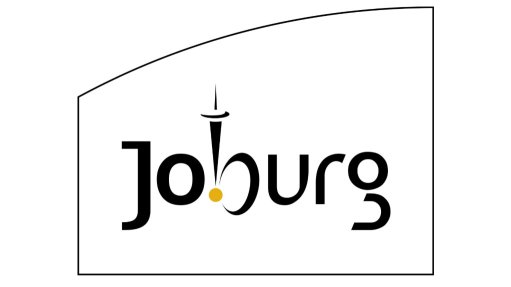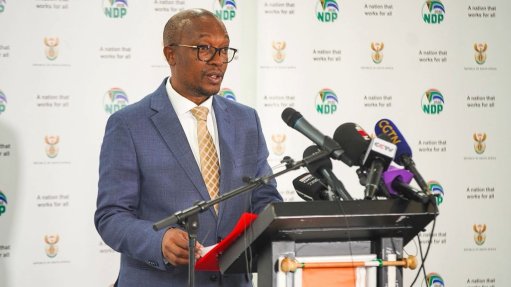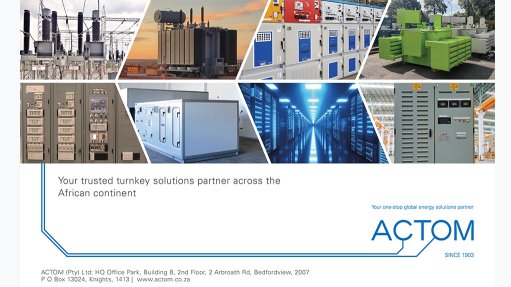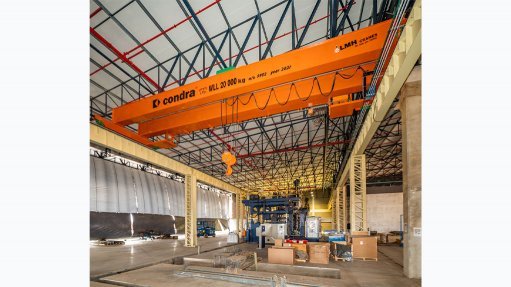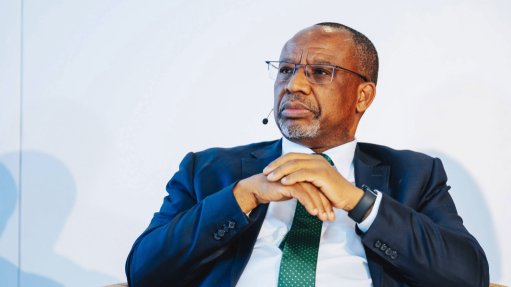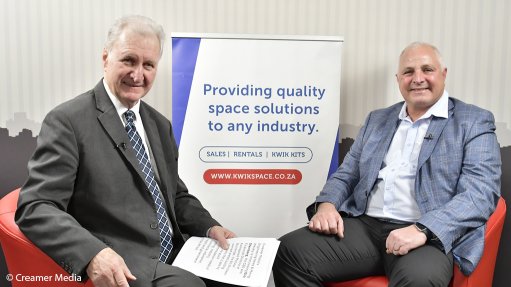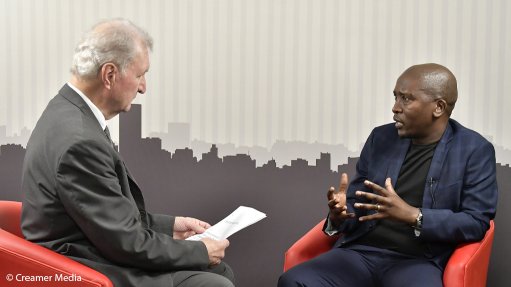An energy secure Africa starts with the beneficiation of critical mineral resources
This article has been supplied and will be available for a limited time only on this website.
By: Shirley Webber, Managing Executive - Resources & Energy, Absa CIB and B20: Energy Mix and Just Transition Task Force Member
As an excellent conductor of electricity, copper is used in the inner workings of wind turbines, solar power systems, electric vehicles, and hydropower generation and transmission. On average, copper usage is six times more in renewable energy technologies than in fossil fuels and nuclear plants. To construct a 3-megawatt wind turbine, 4,7 tons of copper is required; a solar power system requires 5,5 tons of copper per megawatt generated, and battery-powered electric vehicles require 83 kilograms of copper.
If the world wants to realise a net-zero energy system on a global scale by 2050, copper usage will increase significantly. Within the next 25 years, copper demand could double or even triple from current levels up to 50 million metric tons per year.
To completely overhaul the global energy system, the Kalahari Copper Belt and Central Africa Copperbelt in the Democratic Republic of Congo and Zambia will have prominent positions as copper resources. As the third largest producing region globally, Africa accounts for approximately 16 percent of global produce. However, copper is only one indispensable mineral needed for a sustainable energy transition.
Lithium, nickel, manganese, cobalt, graphite, chromium, and zinc are some of the other critical minerals that will enable this global energy transition. Many of these minerals are mined across Africa – cobalt in DRC, Zambia, and Madagascar; lithium in Zimbabwe; graphite in Mozambique and South Africa; nickel in Madagascar, Botswana, and South Africa; and manganese in Gabon and South Africa.
Cumulatively, sub-Saharan Africa holds 30 percent of the volume of proven critical mineral reserves. This poses immense opportunities for the continent – if approached strategically, practically, and cooperatively.
Beneficiation has recently become a central discussion point in many mining and even renewable energy circles. In the past, sub-Saharan Africa mainly received investor attention due to its explorative and mining capabilities, combined with its critical mineral reserves.
During many exchanges in the B20 Energy Mix and Just Transition task force forums, the magnifying glass has been on the economic potential of developing downstream industries in Africa.
To use the example of copper extraction again, Africa’s copper exports were valued at $35 billion in 2024, of which $849.93 million were sent to China. As a major global player in the green energy transition, China’s demand on Africa’s copper resources will increase significantly over the next few years as developed and developing countries prioritise their sustainability agendas.
Mainly due to a lack of copper smelting and refining infrastructure, Africa has remained a copper exporting country, instead of becoming a prominent renewable energy technologies manufacturer. With copper prices expected to enter a phase of expansion due to the global push for renewable energy generation, Africa is ideally positioned to reap the rewards of its own critical mineral resources.
To realise the continent’s own renewable energy generation infrastructure plans, Africa’s government initiatives stand to significantly benefit from beneficiation. As an example, South Africa’s updated Integrated Resource Plan for 2024–2050 maps out the country’s energy future until 2050. Government initiatives such as the Renewable Energy Independent Power Producer Procurement Programme (REIPPP) and Battery Energy Storage Independent Power Producers Procurement Programme (BESIPPP) have already added 9 906 MW of renewable energy capacity and 1 129 MW of battery storage capacity respectively. Beneficiation will further advance the realisation of shorter-term energy generation and storage goals such as these.
Apart from the significant economic value, job creation, and diversification of economies from beneficiation, another, often overlooked benefit is the reduction of carbon emissions. While Africa as a continent has a low per capita carbon emission, this is not the case for all the African nations. South Africa, for instance, has one of the highest carbon intensity outputs in the world due to its reliance on coal-generated energy. In 2024, the country’s total greenhouse gas emissions were around 398-510 MtCO2-eq. Despite this being a 1% share of the global GHG emissions, it is significantly above the global per capita emissions.
By processing raw materials into manufactured goods, instead of exporting raw materials to far outlying countries such as China for beneficiation, these countries’ carbon emissions can be further reduced, especially when used together with renewable power. Due to economies of scale and technological advancements, green manufacturing principles would lead to efficiency gains and lower emissions per unit of output.
What stands in the way of Africa fully benefiting from beneficiation of its own critical mineral resources and addressing the continent’s own renewable energy needs is regional nationalism. Developing a mining and manufacturing value chain must start with regional cooperation between African countries. A critical point of departure is that beneficiation and its related infrastructure should be implemented in a collaborative but phased approach.
To truly move the needle for both Africa’s mining industries and renewable energy sectors, manufacturing plants should be planned around resource deposits, not regions. If not, the continent may have numerous copper production facilities strewn alongside its copper belts.
The likely result would be increased competitive pricing, inefficiencies, and unnecessary carbon emissions. With regional cooperation, strategically positioned manufacturing facilities can effectively connect raw material regions, thus increasing the feasibility of raw material processing on African soil by reducing investment risk.
From an investment perspective, moving away from resource nationalism towards resource-based infrastructure will also ensure global capital flows towards the most critical, profitable, and productive critical mineral beneficiation capabilities on the continent. Industry learnings are also more likely to be shared with resource-based infrastructure projects between regions, from a mining, manufacturing, and renewable energy perspective.
Egypt is a prime example where shared insights would be invaluable. As an African country, Egypt was able to enhance its energy security while simultaneously expanding its manufacturing capabilities. In turn, this has led to Egypt securing significant private renewable energy investments to the value of $4 billion.
Until now, Africa’s energy transition has been underdeveloped – and it’s time to change that. The B20 Energy Mix and Just Transition task force is a pivotal platform for Africa to reframe the terms of engagement regarding the continent’s renewable energy reality. The beneficiation of Africa’s critical mineral resources is the starting point to position Africa where it rightfully belongs in creating an energy secure future.
Comments
Announcements
What's On
Subscribe to improve your user experience...
Option 1 (equivalent of R125 a month):
Receive a weekly copy of Creamer Media's Engineering News & Mining Weekly magazine
(print copy for those in South Africa and e-magazine for those outside of South Africa)
Receive daily email newsletters
Access to full search results
Access archive of magazine back copies
Access to Projects in Progress
Access to ONE Research Report of your choice in PDF format
Option 2 (equivalent of R375 a month):
All benefits from Option 1
PLUS
Access to Creamer Media's Research Channel Africa for ALL Research Reports, in PDF format, on various industrial and mining sectors
including Electricity; Water; Energy Transition; Hydrogen; Roads, Rail and Ports; Coal; Gold; Platinum; Battery Metals; etc.
Already a subscriber?
Forgotten your password?
Receive weekly copy of Creamer Media's Engineering News & Mining Weekly magazine (print copy for those in South Africa and e-magazine for those outside of South Africa)
➕
Recieve daily email newsletters
➕
Access to full search results
➕
Access archive of magazine back copies
➕
Access to Projects in Progress
➕
Access to ONE Research Report of your choice in PDF format
RESEARCH CHANNEL AFRICA
R4500 (equivalent of R375 a month)
SUBSCRIBEAll benefits from Option 1
➕
Access to Creamer Media's Research Channel Africa for ALL Research Reports on various industrial and mining sectors, in PDF format, including on:
Electricity
➕
Water
➕
Energy Transition
➕
Hydrogen
➕
Roads, Rail and Ports
➕
Coal
➕
Gold
➕
Platinum
➕
Battery Metals
➕
etc.
Receive all benefits from Option 1 or Option 2 delivered to numerous people at your company
➕
Multiple User names and Passwords for simultaneous log-ins
➕
Intranet integration access to all in your organisation






